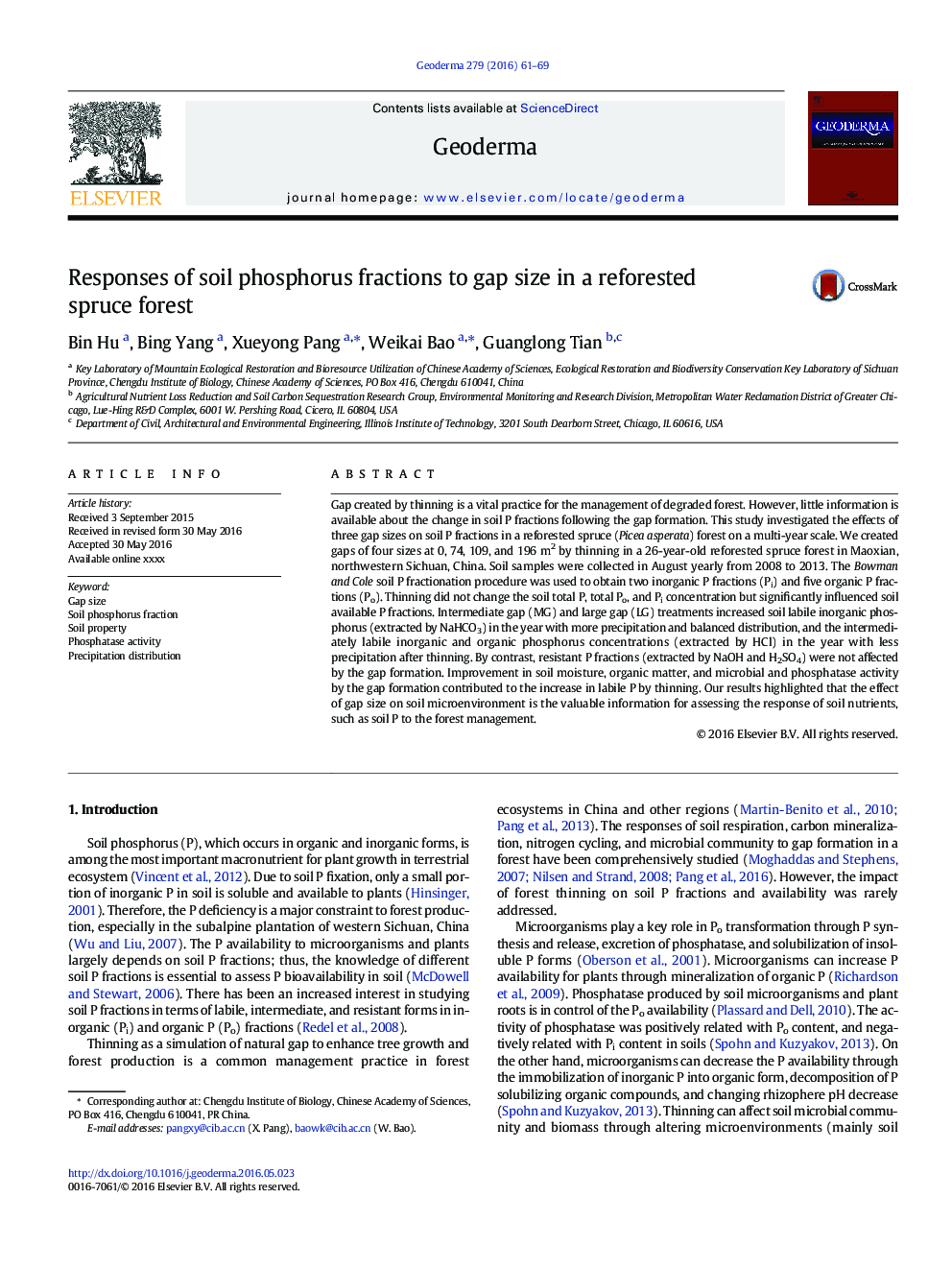| Article ID | Journal | Published Year | Pages | File Type |
|---|---|---|---|---|
| 6408311 | Geoderma | 2016 | 9 Pages |
Abstract
Gap created by thinning is a vital practice for the management of degraded forest. However, little information is available about the change in soil P fractions following the gap formation. This study investigated the effects of three gap sizes on soil P fractions in a reforested spruce (Picea asperata) forest on a multi-year scale. We created gaps of four sizes at 0, 74, 109, and 196Â m2 by thinning in a 26-year-old reforested spruce forest in Maoxian, northwestern Sichuan, China. Soil samples were collected in August yearly from 2008 to 2013. The Bowman and Cole soil P fractionation procedure was used to obtain two inorganic P fractions (Pi) and five organic P fractions (Po). Thinning did not change the soil total P, total Po, and Pi concentration but significantly influenced soil available P fractions. Intermediate gap (MG) and large gap (LG) treatments increased soil labile inorganic phosphorus (extracted by NaHCO3) in the year with more precipitation and balanced distribution, and the intermediately labile inorganic and organic phosphorus concentrations (extracted by HCl) in the year with less precipitation after thinning. By contrast, resistant P fractions (extracted by NaOH and H2SO4) were not affected by the gap formation. Improvement in soil moisture, organic matter, and microbial and phosphatase activity by the gap formation contributed to the increase in labile P by thinning. Our results highlighted that the effect of gap size on soil microenvironment is the valuable information for assessing the response of soil nutrients, such as soil P to the forest management.
Related Topics
Physical Sciences and Engineering
Earth and Planetary Sciences
Earth-Surface Processes
Authors
Bin Hu, Bing Yang, Xueyong Pang, Weikai Bao, Guanglong Tian,
